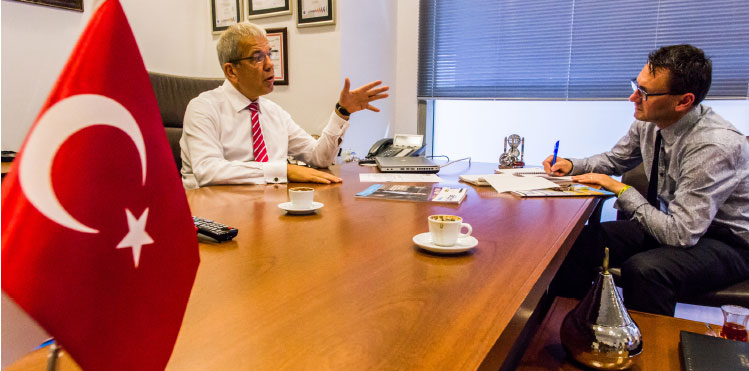
Explaining away 10 years of 20-25% annual growth: “Our aim is to pass 25 million and enter the super-league,” says SGIA’s CEO Gökhan Buğday. “It’s possible growth will be higher than even we forecast; indeed, I don’t discount the possibility that there may be more than 200 million passengers in the Istanbul airport system in much less than 20 years.”
This year SGIA will come tantalisingly close to 24 million passengers, up from 18.6 million last year, and a 100-fold increase on 10 years ago when the entire throughput for the whole of 2004 was just 245,000 – a time when the airport frequently had to defend itself from charges of being an irrelevant white elephant.
What has taken SGIA from a small regional airport-type performance is not the sudden and extraordinary growth that comes to some airports over one or two years as a result of securing a new airline base, but ‘extraordinarily consistent’
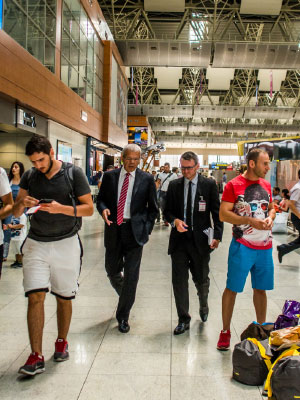
Buğday on SGIA’s competition with the new $10bn Istanbul Grand Airport: “The advent of IGA is more helping us to achieve our 50 million passenger forecast, than eroding our chances.”
growth of 20-25% every year in the past decade.
“Our aim is to pass 25 million and enter the super-league,” says Buğday. “We will next year, and we’ll maintain double-digit growth for another 4-5 years.” After this, Buğday thinks growth will moderate. “At this scale and size, 20% growth means finding another five million more passengers every year, and we probably should not expect to be delivering so many millions!” But while Buğday believes “growth is not likely to be permanent,” and that expansion in 5-6 years will “settle down to around 10%, becoming stable, at least not going down…” he also appears to wrestle with an unusual struggle: The possibility that SGIA may underestimate the size of future passenger traffic. “I suppose it’s possible that growth will be higher than even we forecast; indeed, I don’t discount the possibility that there may be more than 200 million passengers in the Istanbul airport system in much less than 20 years.” These meanderings are the stuff of dreams for much of the rest of the world.
“Of course it has helped a lot that Turkey did have a good recession,” reflects Buğday, without intended irony, while commenting on the big external factors for the airport’s exponential growth, including the fact that, while the rest of Europe struggled, Turkish GNP expanded by a whopping average 5.5% in the five years 2010-14, making it the fastest growing economy in Europe, and one of the fastest expanding developed economies in the world.
For Buğday the positives just keep stacking up: Istanbul, at 14.2 million, is Europe’s biggest mega city (including five million on the Asian side immediately around Sabiha Gökçen). “The per capita GNP in Istanbul is $30,000 and this affluent middle class extends SGIA’s two-hour catchment to 20 million.” (By comparison per capita GNP is $34,000 in Italy, $43,000 in France, and $10,500 nationally in Turkey.)
While the Turkish economy is booming, tourism is booming, and SGIA’s own customers are booming, a large portion of SGIA’s success has also been closely intertwined with that of Pegasus Airlines, which transitioned from a modest charter carrier to fully-fledged low cost airline in 2005. Demand for a low cost alternative to Turkish Airlines was massive, and both the airline and airport have enjoyed the magical, near-25% annual growth ever since.
Turkish Airlines comes to Sabiha Gökçen
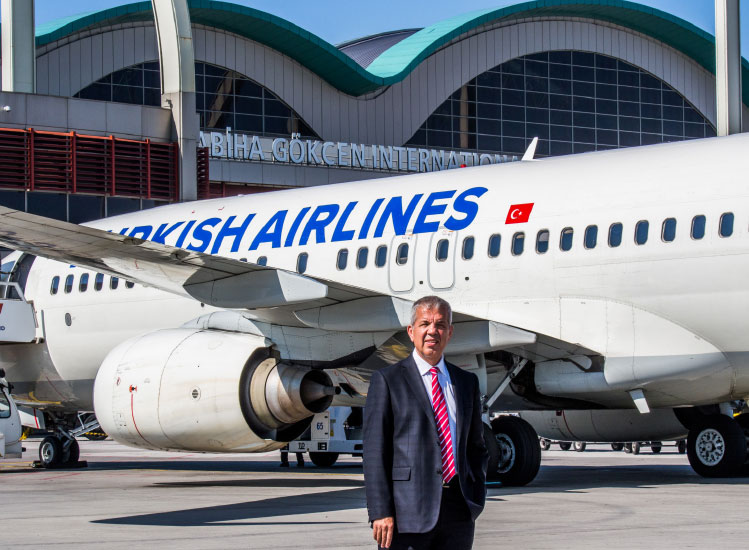
The full service airport: “Turkish Airlines’ decision to come here truly buries the low cost label. It has also boosted our traffic yet again, rather than taking market share away from Pegasus, which has continued to grow at over 24% in the year since Turkish arrived.”
Pegasus carried 16.8 million passengers last year – yet another 24% improvement – and, although not all of these passengers travelled to/from SGIA, the airline still dominated SGIA’s 18.6 million throughput. However, this dynamic has been changing for some time. Turkish Airlines’ own massive success, which has seen it become a Middle East-style hub airline (leaping five-fold from 10 million passengers in 2003 to 50 million last year), has long been hard to accommodate at Istanbul’s main Atatürk hub airport. This has been an indirect actor on the success of SGIA, helping to intensify passenger and other-airline interest in Turkey and Istanbul which could not be absorbed at Atatürk. Buğday readily accepts this fact: “SGIA continues to increase its share because of constraints at Atatürk, which has become a victim of its own success to a considerable degree.”
But last year, no longer able to resist getting involved in SGIA’s dynamic growth, Turkish Airlines gave in to temptation and decided to start a second hub at SGIA. “Although the Turkish Airlines low cost subsidiary AnadoluJet has domestic flights, the direct move to SGIA by Turkish Airlines in May 2013 was on a completely different scale. By starting with 13 international destinations, they signalled they are creating a substantial network here.”
However, Buğday is also quick to not want to give all the credit to the airlines. “It was SGIA which created a solution for the under-exploited catchment area on Istanbul’s Asian side and which took all the risk in building, extending and, when the need arose, modernising Sabiha Gökçen. During all this period of super-growth, we have invested hugely in marketing this airport to both the airlines and the consumers. We have not merely responded to market demand, we have in fact been market-makers, directly generating dynamic growth – a whole city has grown up around the airport because of the airport – land prices here were $200 per metre when the airport was first constructed, now they are closer to $2,000 – $20 million per hectare.”
Throwing off the low-cost image
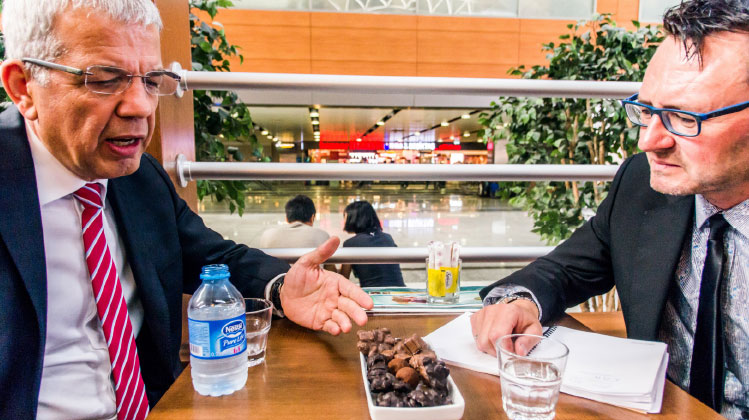
Buğday enthuses about the combination of international retail brands with a very high percentage of local retail offers – Turkish delight of course – but also fabulously high quality Turkish chocolate. Turkey, which still has duty free shopping within Europe, is now one of Europe’s best airport shopping destinations by value.
While it is a matter of fact that SGIA is now Istanbul’s powerful second airport, because its pre-eminence came in parallel with the emergence of Pegasus as a major European low cost carrier, both consumers and airlines often think of SGIA as Istanbul’s ‘low cost airport’. This perception has been reinforced by the fact that all the other low cost carriers heading for Istanbul have also turned up at SGIA – Air Arabia, easyJet, flydubai, germanwings, Jazeera Airways, nasair, Transavia.com and Turkish Airlines’ low cost unit, AnadoluJet. This is not the same for other airports with similar dynamics – for instance London Gatwick is dominated by easyJet, but has successfully imparted a business message because, in contrast to SGIA, it has a whole history predating the advent of low cost carriers.
“We are not a low cost airport, but a full service airport embracing a full range of airlines and passenger profiles – certainly the low cost airlines – and for that matter Pegasus, Turkish Airlines and Qatar Airways, do not disagree,” says Buğday. “Our airport charges are similar, though possibly a little cheaper than at Atatürk. Although many of the new airlines coming to Istanbul have tended to be low cost, they have come to SGIA because it’s a good proposition, and because SGIA gives them a chance of access, while slot and congestion problems at Atatürk would make market entry very difficult. Indeed, airBaltic even switched to SGIA from Atatürk for these very reasons as the on-time performance of our flight schedules exceeds 95%.”
But the most symbolic and seismic change from the low cost image has been the opening of Turkish Airlines’ significant base at SGIA in May last year. The champion Star Alliance carrier epitomises everything that it means to be a full service, hub-and-spoke airline. “Turkish Airlines’ decision to come here truly buries the low cost label. It has also boosted our traffic yet again, rather than taking market share away from Pegasus, which has continued to grow at over 24% in the year since Turkish arrived.”
This effect has been compounded by the arrival in May 2014 of Qatar Airways services – the first of the MEB3 (the ‘Middle East Big 3’ – Emirates, Etihad and Qatar Airways). “Qatar Airways, from the oneworld Alliance, is anything but a low cost carrier. Its decision to launch services to SGIA is based on the level of services we can offer, and the opportunities afforded by our profile and catchment. It is especially significant that it already serves Atatürk.”
The SGIA long haul hit list
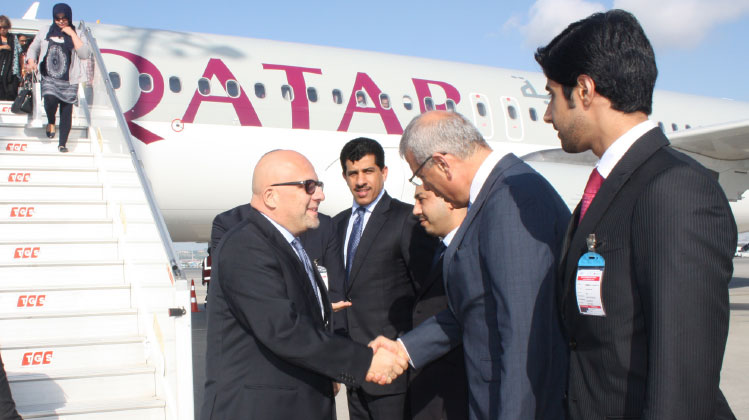
May 2014: Qatar Airways CCO Marwan Koleilat steps off the first MEB3 flight into Istanbul Sabiha Gökçen and gets a warm handshake from Buğday. With groundworks beginning right now on the second runway the SGIA CEO makes his ambition clear: “We want more long haul.”
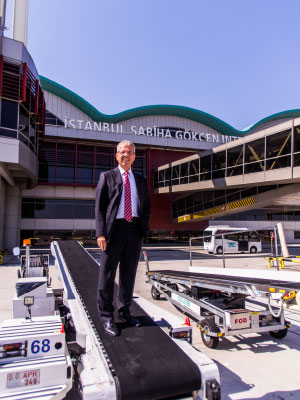
Man of the people: “Everyone in this country works hard and thinks the customer is king. That is why we’re succeeding.”
Qatar’s arrival, and the other airline developments, leads Buğday to stress a long-expressed desire: “We want more long haul.” Buğday does not deny that Emirates and Etihad are “obviously” key targets. But he says SGIA has a lengthy list ofother suitors and is in negotiations with “a lot of people”. He declines to tell us exactly who is targeted, but he does say destinations include Beijing and Shanghai. “I don’t think it’s a secret that New York is also on our list – after all United should have come to here, not Atatürk,” says Buğday, referring to United’s short-lived New York-Istanbul route, for which United apparently did not benefit from expected Star Alliance feed from Turkish Airlines. For now it seems too premature for such a route get the same feed it needs from Turkish Airlines’ new presence at SGIA, which does not yet mesh with long haul connections. But Buğday does say that talks continue with Delta and others for long haul North Atlantic services. For the time being these talks are “not too serious” – apparently the same lack of obvious connection persists. However, he maintains: “A lot of things are changing on the American side and especially Turkish Airlines’ fast-moving strategy at SGIA.”
Ultimately Buğday forecasts: “New York, Chicago and Miami will all be linked within 10 years. It will take a little time but, besides talking to overseas airlines, I am hopeful that either one of our two big home-based carriers could start long haul.”
In the meantime, most of the focus remains exactly where all the growth has been derived from in the past 10 years: “We are 3-4 hours from 100 countries; these destinations are our particular concentration, especially the Middle East, but we must not forget the extensive range of cities which can be viably accessed by mid-sized aircraft such as the 787.”
SGIA’s competition with the $10bn Istanbul Grand Airport
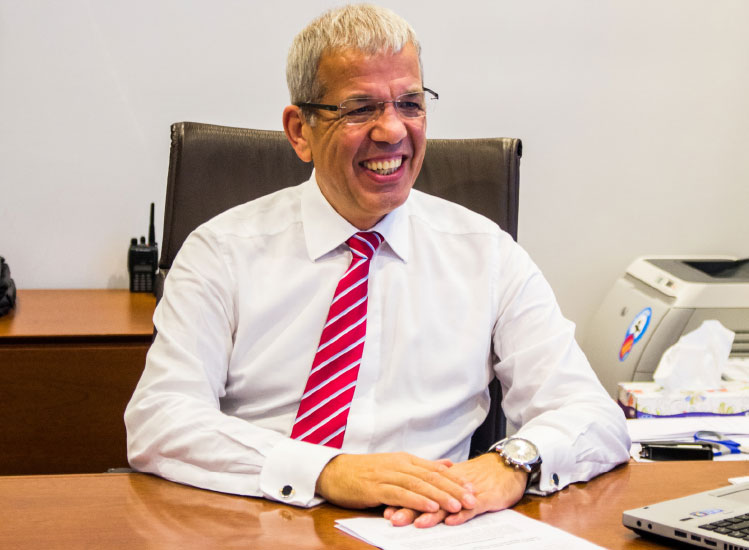
Only 10 years ago the throughput of SGIA was 245,000. After growing 100-fold to nearly 25 million in just 10 years, plans have been carefully laid out for the second runway (construction starts in October) and for a new satellite terminal doubling airport capacity to 70 million.
Turkish Airlines’ explosive growth and charge towards 100 million passengers has driven the burgeoning traffic base at Atatürk, and created the requirement for the new ‘Third Airport’ – the so-called ‘Istanbul Grand Airport’.
But while it has benefited from congestion at Atatürk, SGIA has far more to gain from Istanbul’s emergence as one of the world’s pivotal transport hubs, offering unique advantages halfway between its competitors in Northern Europe and the Middle East, than it does from the constraints on the main hub. Therefore, Buğday is a supporter of IGA and undaunted by the prospect of competing alongside the $10 billion, six-runway, 150 million passenger, giant airport. (Now under construction to the east of Istanbul, the first phase is set to open in 2018.)
“There is a lot of focus on Turkey, so we really need that airport. Growth of 15% is a really big number. We already have 70 million in the Istanbul airports system – that will easily be 80 million this year, and in the next 4-5 years be 100 million; capacity is needed as soon as possible. By the time IGA opens in 3-4 years, SGIA will have at least 35 million passengers and more than 150 destinations – these are all good numbers for us!”
When SGIA reaches these levels a new expansion plan will give the airport the capacity to advance to 70 million passengers. “IGA will no doubt be the newest in the world, and huge – but the qualitative experience will not be less at SGIA, just different. There are reasons why people will choose the hub at IGA, but there are also lots of reasons why they will prefer SGIA: The Asian side catchment, the fact that we will be much closer to downtown, and most likely connected by metro by then. The advent of IGA is more helping us to achieve our 50 million passenger forecast, than eroding our chances.”
New second runway to ‘secure’ SGIA prospects
As IGA takes shape on the Black Sea coast east of Istanbul, Buğday agrees that SGIA’s prospects have been “secured” by the construction of an $850 million second runway suitable for handling A380 operations. Building work gets underway end-October, with completion scheduled for just 30 months later in 2017.
The new capacity comes just in time: The single runway airport will be slot coordinated for the first time this winter, something SGIA would have rather avoided. “We and the airlines would still prefer not to be coordinated after 2015,” says Buğday, regretting some of the loss in scheduling flexibilities this will mean. “But who knows? Maybe it will be a good experience – especially if it means reduced terminal congestion as a result of spreading some of the peak traffic.”
In what amounts to a planning framework that most airports in Europe will look on with some envy, the area for the second runway had been carefully set aside. However, it is not without complexities – a major gas pipeline must be diverted and a 1km road tunnel constructed.
Regional threats and opportunities
But Buğday is not without his worries, particularly the situation in neighbouring Iraq and Syria. “We have shown a good resilience to external shocks ever since the birth of this airport, which coincided with 9/11 – and we continue to do very well, but peace in the Middle East would be so much better for us, as well as everyone else.”
Another promising market for SGIA which is currently troubled is Russia. New Pegasus Airlines services to Moscow, Omsk, Krasnodar and Sochi last year continue to be in significant demand, despite Russians being told by their own government that they will be vilified in the streets of Western Europe – a factor which combines with the worsening of the Russian economy. However, Buğday says none of these things have noticeably impacted Russian travel to Turkey and SGIA. Indeed, in a separate interview, the Pegasus Airlines CEO Sertac Haybat told this magazine in May that he would serve “10-20 destinations” in Russia if he could, claiming the main barrier was bilateral, rather than the market demand. Buğday is more optimistic of the regulatory situation: “Conditions have in fact improved with the opening up of service possibilities to six more Russian cities, and a new frequency permitted on Moscow, which is the most restricted route.” However, there’s little doubt that Russian opportunities from SGIA fall far short of demand, which would be best served by open skies, which is “more or less” the relationship with the EU.
Indeed, other sectors of the Turkish economy can only look on enviously at how its airports and airlines can enjoy some of the most important aspects of the EU’s Single Market, without actually being members, as Turkey’s historically-long full application to join the EU, first made in 1987, has seemingly completely stalled in recent times. But the contrast between Turkey’s soaring economy and the woes of the eurozone show that this is a country that has a momentum all of its own. By any measure – whether GNP or traffic figures at SGIA – so far this has most definitely been Turkey’s Century. Gökhan Buğday says the biggest driver of this isn’t a resource like oil, but the industriousness of its 75 million people: “Turkey has an ingrained service ethic which starts early, at home and in schools. You can find it everywhere, in family cafes as well as the big companies like SGIA. All these businesses are part of the successful Turkish proposition. Everyone in this country works hard and thinks the customer is king. That is why we’re succeeding.”







